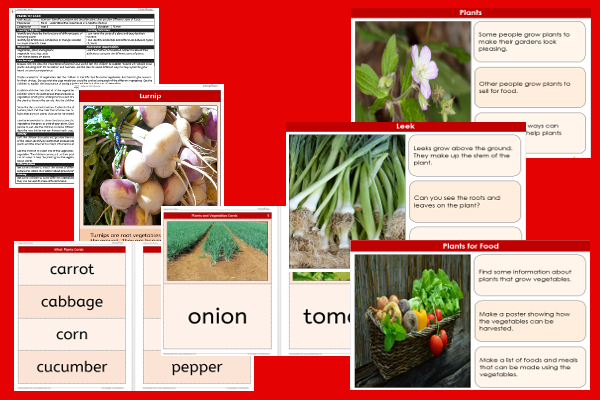Lesson Five – Plants for Food

This science teaching pack for Key Stage Two gets the children to identify, compare and describe some of the special plants that can provide different types of foods for a range of family meals.
The class can design and produce posters to explain and illustrate how a range of plants can grow vegetables for use in different meals for breakfast, lunch and dinner.
Download this teaching pack including a lesson plan, classroom activities and an interactive presentation to identify, compare and describe some of the special plants that can provide different types of foods for a range of family meals
Activities in this teaching pack include display posters to identify and describe the similarities and differences between different plants that produce vegetables and sets of cards to identify and record matching plants that can grow vegetables to use in family meals.
The interactive presentation can be used to explore how to compare and describe some special plants that can provide different types of foods.
This lesson is part of a science scheme of work to get the children to identify and describe the common parts found on all plants and explain how plants can be used for different functions including food, shelter and clothing. There are teaching activities for shared learning, differentiated worksheets to support independent learning and interactive presentations to introduce concepts and key skills.
-

French Schools
Learn and practise speaking and writing French vocabulary and word phrases to describe some of the special things that can happen and are used in a school
-

French Sports
Practise speaking and writing French vocabulary words and phrases to describe some different sports and games
-

Roman Settlement
Explore and record what happened when the Romans settled in Ancient Britain and how it impacted the population and made changes to ways of life
-

3D Shape Labels
Identify and record how to label models and illustrations of some different 3D shapes to indicate their special properties
